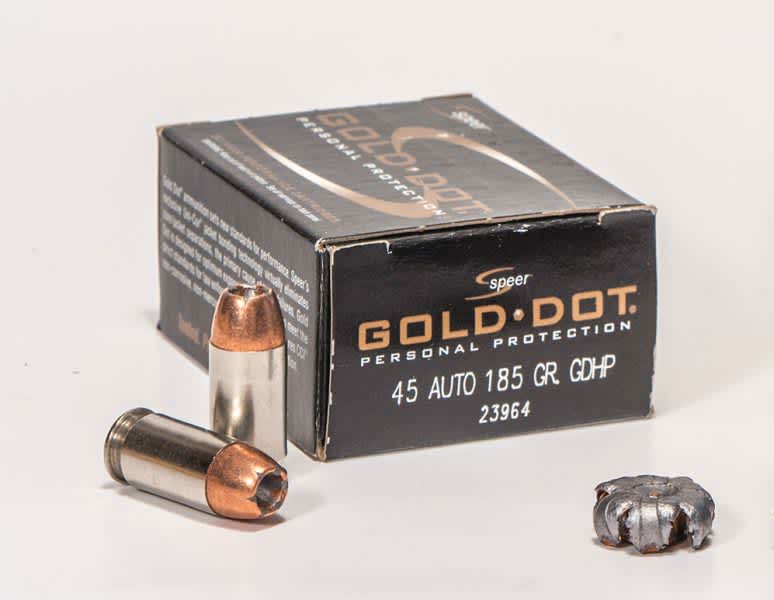Shooting with the Mann: Bonded vs. Non-Bonded Bullets
Richard Mann 10.10.16

A bonded bullet’s core is bonded to the jacket. This “bonding” can be accomplished through a variety of electro or electro-chemical processes. Different manufacturers utilize different methods for different reasons, but the purpose is to prevent core and jacket separation during penetration.
Jacket and core separation sounds like a bad thing. After all, gun writers and manufacturers have conditioned shooters to believe that bullets which retain all their weight and hold together are better than those that don’t. The truth is, there’s more to the story.

Bullet weight and integrity can contribute to penetration, but bullet deformation plays a part in the equation, too. A bullet might retain all its weight, but expand very widely. Another bullet might lose 30 percent of its weight or its jacket, but not deform with such a wide expanded diameter. The result can be the bullet that lost more of its weight actually penetrates the deepest.
With regard to defensive handgun ammunition, bonding was instituted not so much to increase penetration, but to help bullets provide similar terminal performance after passing through common barriers. We can thank the FBI for bonded defensive handgun ammunition.

Some shooters believe some bullets expand faster than others, and that bonded bullets – because they’re tougher – expand slower than traditional bullets, thus damaging more tissue at a deeper depth. This seems logical until you actually apply logic. You see, it takes velocity to make a bullet expand, and as soon as a bullet impacts anything, it begins slowing down. The idea that one bullet would expand slower than another bullet would mean that the bullet would have to slow down before it began to expand.
The advantage that bonded bullets offer is not delayed expansion; it’s their ability to stay together. When defensive handgun bullets pass through a barrier, they start to deform. With non-bonded bullets, the barrier can grab the jacket as it peels back. And sometimes the barrier will actually pull the jacket from the core. This reduces the bullet’s weight and exposes the soft core, so it might erode more or even break apart.
One of the most successful bonded defensive handgun bullets is the Speer Gold Dot. It’s available for most every defensive handgun cartridge, and it’s the duty load for many police agencies. It has a stellar reputation on the street and in FBI testing. But, like most bonded bullets, it is sensitive to impact velocity. For this reason, Speer offers a special line of Gold Dot loads for use with handguns that have short barrels and generate less velocity.

Bonding a bullet’s core to its jacket is not the only way to make it stay together. In fact, some defensive handgun loads, with a good reputation for terminal performance, are not bonded. Some of these loads also perform very well when subjected to the FBI tests. The Hornady Critical Duty and Federal HST and EFMJ (Expanding Full Metal Jacket) loads are perfect examples of barrier defeating, non-bonded bullets.
Which is best, bonded or non-bonded? If you compare the best examples of both, what matters more is reliability in your handgun and shot placement. Of course, there is another option: Don’t forget the all-copper TAC-XP bullets from Barnes. These bullets don’t need bonding or an interlocking band because they have no core that can separate. With the TAC-XP bullet, its kind of like the bullet has married itself. And who knows, that’s something that will probably be legal before too long.


